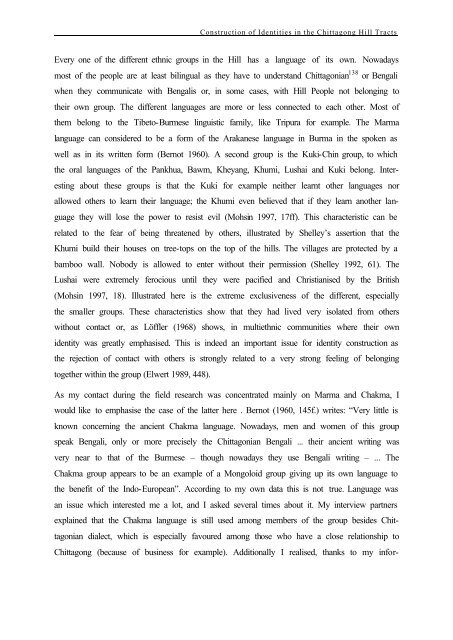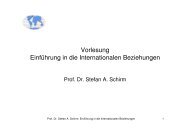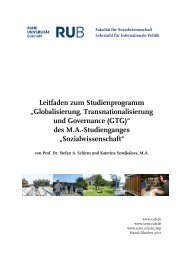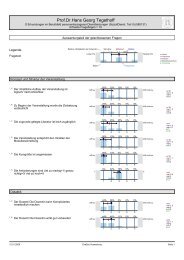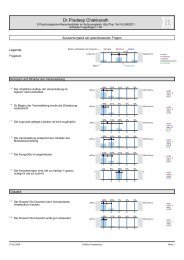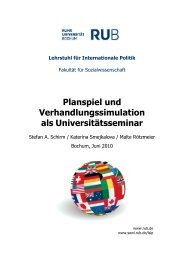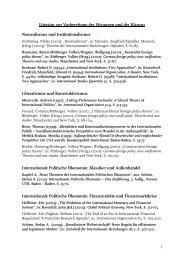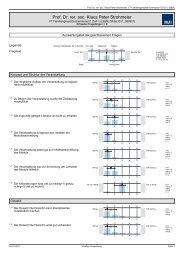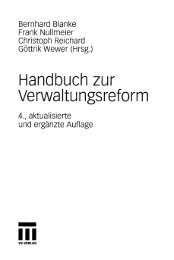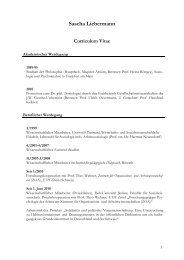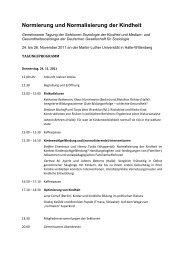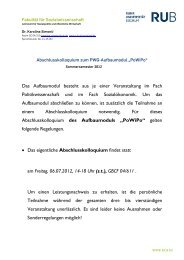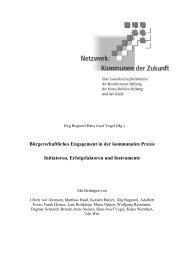Eva Gerharz: âThe Construction of Identities: The Case of the Chitta ...
Eva Gerharz: âThe Construction of Identities: The Case of the Chitta ...
Eva Gerharz: âThe Construction of Identities: The Case of the Chitta ...
Create successful ePaper yourself
Turn your PDF publications into a flip-book with our unique Google optimized e-Paper software.
<strong>Construction</strong> <strong>of</strong> <strong>Identities</strong> in <strong>the</strong> <strong>Chitta</strong>gong Hill Tracts<br />
Every one <strong>of</strong> <strong>the</strong> different ethnic groups in <strong>the</strong> Hill has a language <strong>of</strong> its own. Nowadays<br />
most <strong>of</strong> <strong>the</strong> people are at least bilingual as <strong>the</strong>y have to understand <strong>Chitta</strong>gonian 138 or Bengali<br />
when <strong>the</strong>y communicate with Bengalis or, in some cases, with Hill People not belonging to<br />
<strong>the</strong>ir own group. <strong>The</strong> different languages are more or less connected to each o<strong>the</strong>r. Most <strong>of</strong><br />
<strong>the</strong>m belong to <strong>the</strong> Tibeto-Burmese linguistic family, like Tripura for example. <strong>The</strong> Marma<br />
language can considered to be a form <strong>of</strong> <strong>the</strong> Arakanese language in Burma in <strong>the</strong> spoken as<br />
well as in its written form (Bernot 1960). A second group is <strong>the</strong> Kuki-Chin group, to which<br />
<strong>the</strong> oral languages <strong>of</strong> <strong>the</strong> Pankhua, Bawm, Kheyang, Khumi, Lushai and Kuki belong. Interesting<br />
about <strong>the</strong>se groups is that <strong>the</strong> Kuki for example nei<strong>the</strong>r learnt o<strong>the</strong>r languages nor<br />
allowed o<strong>the</strong>rs to learn <strong>the</strong>ir language; <strong>the</strong> Khumi even believed that if <strong>the</strong>y learn ano<strong>the</strong>r language<br />
<strong>the</strong>y will lose <strong>the</strong> power to resist evil (Mohsin 1997, 17ff). This characteristic can be<br />
related to <strong>the</strong> fear <strong>of</strong> being threatened by o<strong>the</strong>rs, illustrated by Shelley’s assertion that <strong>the</strong><br />
Khumi build <strong>the</strong>ir houses on tree-tops on <strong>the</strong> top <strong>of</strong> <strong>the</strong> hills. <strong>The</strong> villages are protected by a<br />
bamboo wall. Nobody is allowed to enter without <strong>the</strong>ir permission (Shelley 1992, 61). <strong>The</strong><br />
Lushai were extremely ferocious until <strong>the</strong>y were pacified and Christianised by <strong>the</strong> British<br />
(Mohsin 1997, 18). Illustrated here is <strong>the</strong> extreme exclusiveness <strong>of</strong> <strong>the</strong> different, especially<br />
<strong>the</strong> smaller groups. <strong>The</strong>se characteristics show that <strong>the</strong>y had lived very isolated from o<strong>the</strong>rs<br />
without contact or, as Löffler (1968) shows, in multiethnic communities where <strong>the</strong>ir own<br />
identity was greatly emphasised. This is indeed an important issue for identity construction as<br />
<strong>the</strong> rejection <strong>of</strong> contact with o<strong>the</strong>rs is strongly related to a very strong feeling <strong>of</strong> belonging<br />
toge<strong>the</strong>r within <strong>the</strong> group (Elwert 1989, 448).<br />
As my contact during <strong>the</strong> field research was concentrated mainly on Marma and Chakma, I<br />
would like to emphasise <strong>the</strong> case <strong>of</strong> <strong>the</strong> latter here . Bernot (1960, 145f.) writes: “Very little is<br />
known concerning <strong>the</strong> ancient Chakma language. Nowadays, men and women <strong>of</strong> this group<br />
speak Bengali, only or more precisely <strong>the</strong> <strong>Chitta</strong>gonian Bengali ... <strong>the</strong>ir ancient writing was<br />
very near to that <strong>of</strong> <strong>the</strong> Burmese – though nowadays <strong>the</strong>y use Bengali writing – ... <strong>The</strong><br />
Chakma group appears to be an example <strong>of</strong> a Mongoloid group giving up its own language to<br />
<strong>the</strong> benefit <strong>of</strong> <strong>the</strong> Indo-European”. According to my own data this is not true. Language was<br />
an issue which interested me a lot, and I asked several times about it. My interview partners<br />
explained that <strong>the</strong> Chakma language is still used among members <strong>of</strong> <strong>the</strong> group besides <strong>Chitta</strong>gonian<br />
dialect, which is especially favoured among those who have a close relationship to<br />
<strong>Chitta</strong>gong (because <strong>of</strong> business for example). Additionally I realised, thanks to my infor-


